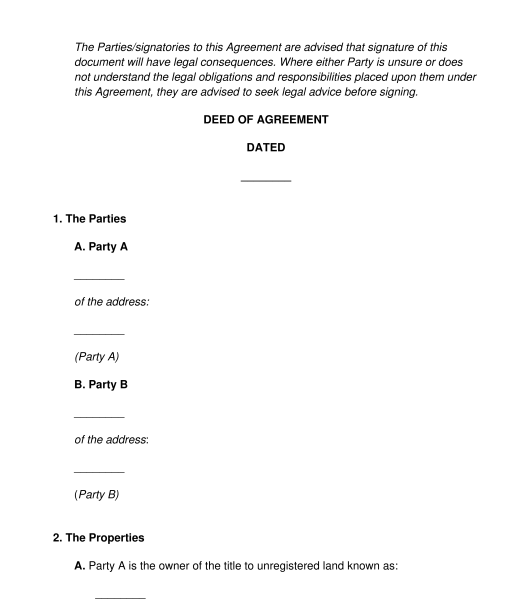 13/01/2025
13/01/2025

Answer a few questions and your document is created automatically.

Your document is ready! You will receive it in Word and PDF formats. You will be able to modify it.

You can choose to get help from a lawyer after filling out the document.

 13/01/2025
13/01/2025
 Word and PDF
Word and PDF
 3 to 4 pages
3 to 4 pages



Option: Help from a lawyer
Fill out the templateThis document can be used by two parties who own adjoining properties and who are in dispute regarding a boundary. The document should be used where the properties are owned by individuals (as opposed to corporate entities) and where the properties are based in England and Wales. The purpose of the document is to create an agreement that the dispute about the boundary will be referred to an arbitrator.
Arbitration is a method of resolving disputes, known as alternative dispute resolution (ADR), which is an alternative to court proceedings or litigation. An arbitrator can be appointed by parties where there is a dispute in order to determine the issue. They are able to make a legally binding decision. The parties should generally consider the referral to an arbitrator after other measures have been taken to discuss and resolve the dispute. The Property Protocols website sets out a Boundary Dispute Protocol which can be referred to for the relevant steps.
There are other forms of ADR which the parties may also consider, such as mediation or determination by an expert. Where the parties are unsure which form of ADR will be most appropriate, they may wish to seek independent advice. Often, parties may choose the arbitration route for some of the following reasons:
Many arbitrators or institutions which appoint arbitrators will ask for evidence that both parties have agreed to refer the matter to arbitration. This document can therefore be presented in order to evidence the agreement of the parties. Furthermore, the document can set out a clear agreement to confirm the precise issue in dispute.
It should be noted that, if the dispute relates to building work which is to be carried out near to or on a boundary, the parties should refer to different provisions and procedures contained in the Party Wall Act 1996.
How to use this document
The document should be completed with the details for each party and the agreed details in relation to the appointment of the arbitrator. It can be particularly useful for the parties to create a map/plan which identifies the disputed boundary. Any such map or plan can be attached to the agreement.
Once the document has been completed with the relevant information, it must be executed as a deed. This means that each party to the agreement must sign the document in the presence of an independent witness. Care should be taken to ensure that the signatures are correctly witnessed, and that the witness is suitable and is legally able to witness the document.
The document will not be reviewed by a lawyer to ensure that the legal content applies to the personal situation of the parties. In order to review the particulars of any final agreement, it will be necessary to instruct a lawyer. For assistance finalising, reviewing and executing a deed, advice should be sought from a lawyer who is regulated by an approved regulator in the legal services sector. It is possible to search for a lawyer using the Law Society – find a solicitor webpage.
Once the deed has been executed, the parties should proceed with the selected arbitration process and may be required to submit the Deed to the Arbitrator as part of that process. Each party should retain a signed copy of the agreement.
In the event that one party alleges that the deed has not been adhered to, they may wish to formally notify the party of the same before taking further action.
Relevant law
The main piece of law which governs the Arbitration process is The Arbitration Act 1996.
The main statute which governs the execution of deeds in England and Wales is The Law of Property (Miscellaneous Provisions) Act 1989.
Help from a lawyer
You can choose to consult a lawyer if you need help.
The lawyer can answer your questions or help you through the process. You will be offered this option when you complete the document.
How to modify the template
You fill out a form. The document is created before your eyes as you respond to the questions.
At the end, you receive it in Word and PDF formats. You can modify it and reuse it.
Country: United Kingdom